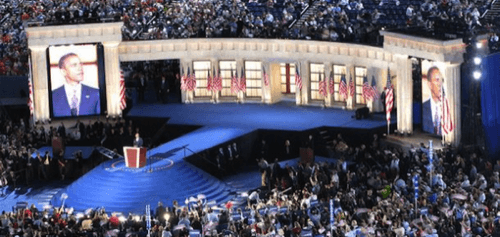
President Obama’s appearance at the Democratic National Convention in September took place amid a rat’s nest of perils. But the local Charlotte, North Carolina, police weren’t entirely on their own. They were aided by a sophisticated data mining system that helped them identify threats and react to them quickly. (Part 1 of a 3-part series about the technology behind presidential security.)
The Charlotte-Mecklenberg police used a software from lxReveal to monitor the Internet for associations between Obama, the DNC, and potential treats. The company’s program, known as uReveal, combs news articles, status updates, blog posts, discussion forum comments. But it doesn’t simply search for keywords. It works on concepts defined by the user and uses natural language processing to analyze plain English based on meaning and context, taking into account slang and sentiment. If it detects something amiss, the system sends real-time alerts.
“We are able to read and alert almost as fast as [information] comes on the Web, as opposed to other systems where it takes hours,” said Bickford, vice president of operations of IxReveal.
In the past, this kind of task would have required large numbers of people searching and then reading huge volumes of information and manually highlighting relevant references. “Normally you have to take information like an email and shove it in to a database,” Bickford explained. “Someone has to physically read it or do a keyword search.
uReveal, on the other hand, lets machines do the reading, tracking, and analysis. “If you apply our patented technology and natural language processing capability, you can actually monitor that information for specific keywords and phrases based on meaning and context,” he says. The software can differentiate between a Volkswagen bug, a computer bug and an insect bug, Bickford explained – or, more to the point, between a reference to fire from a gun barrel and on to fire in a fireplace.
Bickford says the days of people slaving over sifting through piles of data, or ETL (extract, transform and load) data processing capabilities are over. “It’s just not supportable.”
Finding Patterns & Discovering Clusters
Once the system understands what people are saying, it performs behavioral analytics to detect patterns in interactions among people and identify clusters of people who follow particular patterns. “You look at how the community is changing,” Bickford explained, “like flash mobs forming.”
The system doesn’t profile individuals based on demographics or personal identifiers. “We dont need name, race, or gender to link info togetrhter, which is what used to be done. The analysis is based on meaning and context.”
Managing A Proliferation Of Data
The U.S. president isn’t the only one who benefits from uReveal. More than thirty police departments and multiple government agencies use it to track behavior, detect fraud, and monitor regulatory compliance. In the private sector, major clients include the Bill and Melinda Gates Foundation; the service monitors threats to both the Gates’ and their foundation.
And Bickford has a broader range of organizations in his sights. Systems like uReveal are essential to the task of gathering intelligence – not just law enforcement but business intelligence – in an age of proliferating data. “Organizations, whether government of business, will deal with [increasing amounts of] information in the future,” Bickford pointed out. “We’re trying to make analystics and intelligence a commodity, so everyone can get what they want. Our tech has taken a huge step in that direction.”
The software costs as little as $5,000 for a small sheriff department and as much as half a million dollars for a government agency.
Check out the video below to learn more about how uReveal works.
Next: image analysis.
Photo by Steve Jurvetson

















